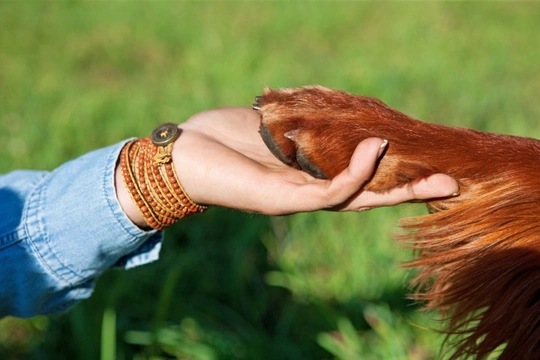
How to disinfect and care for minor scratches on your dog’s skin
Scratches and minor skin abrasions are a fairly common occurrence for dogs, and are generally a fairly minor problem. Dogs can get scratches and small surface wounds that break the skin but do not bleed heavily in a whole range of ways, including being scratched by thorns and brambles, being swatted by a cat, by excessively scratching their own skin, or through rough play with other dogs.
While scratches such as these usually clear up on their own even if left alone, it is a good idea to learn how to take care of minor scratches that do not require a visit to the vet, in order to promote healing and greatly reduce the chances of infection. The claws of both dogs and cats are laden with bacteria of various forms, including faecal bacteria, and an open cut, even a minor one can soon become infected simply by means of your dog going about their day to day life as normal.
In this article, we will look at basic first aid for minor scratches and skin abrasions, including how to clean and disinfect them, monitor them, and aid in their recovery. Read on to learn more.
Cleaning scratches and minor surface wounds
You should keep a basic first aid kit at home especially for your dog, which should contain all of the basic tools you need to deal with small problems, and treat your dog in the case of an emergency.
Using the tools from your first aid kit, cleaning a minor wound is very simple. You should have your dog tied up securely or held by a friend, as well as ensuring that your dog is muzzled if they are apt to snap when you touch their sensitive, hurt area!
Once you have secured your dog and have good access to the wound and all of your tools to hand, firstly, thoroughly wash your own hands in hot water and soap, or a specialist hand cleanser such as Hibiscrub.
Then, use your fingers or blunt-ended tweezers (never sharp or pointed ones) to carefully remove as much surface debris from the wound as possible. Do not pull out any debris that are puncturing the skin; these should be seen to by your vet, as they may have caused internal damage or bleed heavily once removed. Then, use a very dilute antiseptic rinse that is not apt to sting to irrigate the wound, removing any remaining grit or dirt.
Once there are no surface debris remaining, thoroughly clean the wound by hand with antiseptic, including a good margin of the surrounding unbroken skin. You may, in some cases, have to clip away a small patch of hair in order to do this properly.
Should you cover the wound?
Once the skin has been thoroughly cleaned up and any excess hair trimmed so that you can gain access to it, you will need to decide whether you should cover the wound, or leave it open to the air to heal.
Scratches that are no longer bleeding and that are clean and neat are generally best left uncovered, to allow good oxygen circulation to prevent healing. However, if the cut is weeping or inflamed, or if your dog is likely to knock it or scratch at it, it may be a better idea to cover the wound for a day or so, until it begins to heal.
If you do decide to cover the wound, make sure to use a sterile pad that is absorbent but covered with a non-stick surface, to prevent it from adhering to the wound. Place the pad over the wound, and then use a gauze bandage to secure it in place, ensuring that you wrap the gauze as loosely as possible while not impeding its security, so that you do not affect your dog’s circulation.
Then, tie off the ends, and wrap the bandage with first aid tape to secure it.
Monitoring the wound
Keeping an eye on an uncovered wound is easy enough, and you should disinfect it a couple of times a day until it is well on its way to healing. However, if you have bandaged your dog’s wound, this requires extra vigilance. In the hours following bandaging, keep an eye out for any seepage from under the bandage, or swelling of the affected area. If either of these things occur, pop your dog along to the vet.
It is important that the bandage is kept clean and dry at all times, and changed if it gets wet or messy.
Check the wound itself after twelve hours, changing the bandage and cleaning the wound again when you do, and after 24 hours or so, you should be able to remove the bandage to allow the wound to continue to heal uncovered.
Do you need to see a vet?
If the wound is large, deep, has ragged edges, bleeds a lot or weeps a lot, or has foreign bodies or debris stuck in it that you cannot remove, your dog will need to see a vet for treatment.
Heat, swelling, bright red borders and other signs of infection also require veterinary attention.
It is important to note that any scratch or damage to the eye, however minor, should be dealt with by your vet. Certain breeds of dogs with protruding eyes, such as the Pug, are at higher risk for scratching their eyes than other breeds, which should be taken into account if you spot scratches on other areas of your dog’s face.



